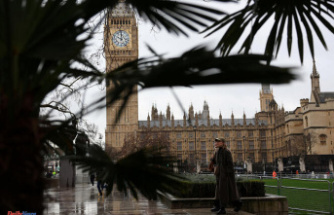In an effort to streamline its operations, increase profitability and better compete with online retailers, J.C. Penney announced Friday that it plans to close 130 to 140 underperforming stores in the coming months and sell two distribution centers including one in Buena Park and another in Lakeland, Fla.
The list of targeted stores is expected to be announced next month. Operations at the company’s massive Buena Park facility will be moved to another J.C. Penney distribution center in the Inland Empire, company officials said.
Management at many area J.C. Penney locations could not be reached early Friday to verify their stores’ status. But one store in the Antelope Valley Mall said it’s not on hit list.
“We are not one of the stores that will be closing,” a store representative said Friday. “They are underperforming stores that are closing and have already been notified. But we are not one of them.”
Chairman and CEO Marvin R. Ellison said J.C. Penney is taking “aggressive action to better align our retail operations for sustainable growth.” The department store chain said it is initiating a voluntary early retirement program for about 6,000 eligible employees — far more than the number of full-time positions that will be affected by the store closures.
Employees in the company’s pension program who are at least 55 years of age with 15 years of service as of Jan. 31 are eligible for early retirement.
“We believe closing stores will also allow us to adjust our business to effectively compete against the growing threat of online retailers,” Eillison said in a statement. “While many pure play e-commerce companies are experiencing dramatically increasing fulfillment costs, we are pleased with the double digit growth of jcpenney.com and how leveraging our brick and mortar locations is enabling us to offset the last-mile delivery cost.”
Eillison figures the winning combination will be a “frictionless interaction between stores and e-commerce,” while leveraging physical locations to minimize the growing operational costs of delivery.
J.C. Penney posted net sales of $12.5 billion last year, down slightly from $12.6 billion in 2015. Comparable store sales — which measures the performance of stores that were open over the course of a year — were flat in 2016. The company announced earlier this week that it sold its Plano, Texas headquarters but will lease back 65 percent of that space.
Phil Lempert, a Santa Monica-based expert on consumer behavior and marketing trends, said the retail climate has shifted and brick-and-mortar stores are scrambling to better align themselves with online shoppers.
“If you look at the entire retail landscape — including clothing, food and other goods — the old brick-and-mortar model needs to evolve,” he said. “People are buying more goods on the internet than ever before. A lot of those stores that were built 40 and 50 years ago ... we just don’t need that much space anymore. It’s become a balancing act to have the right amount of stores to meet consumer needs. You can’t have stores with a lot of employees sitting around waiting for people to come in anymore.”
Our editors found this article on this site using Google and regenerated it for our readers.












